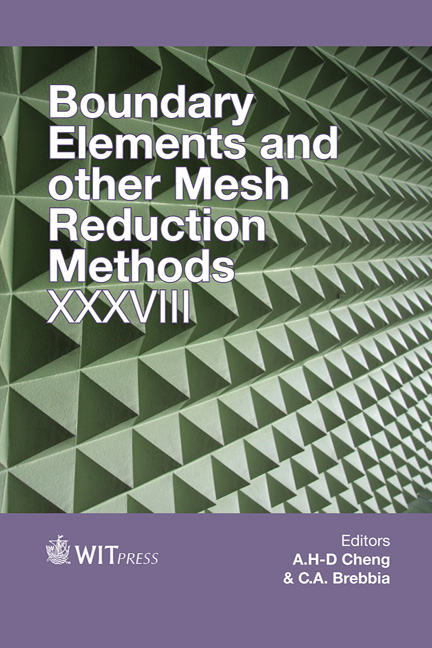3D Rolling Processing Analysis By The Fast Multi-pole Boundary Element Method
Price
Free (open access)
Transaction
Volume
61
Pages
14
Page Range
197 - 210
Published
2015
Size
551 kb
Paper DOI
10.2495/BEM380161
Copyright
WIT Press
Author(s)
G. Shen, D. Liu, C. Yu, Y. Zheng
Abstract
For a roll gap of continuous plastic forming, the determination of mechanical parameters of a rolling processing involves a multi-body elasto-plastic frictional contact problem. As one of the three important numerical analytic methods, the Boundary Element Method (BEM) is suitable for the solution of contact problems, and it shows superiority to the Finite Element Method (FEM) and Finite Difference Method (FDM) in these cases. However, when the contact objects become very complicated and large-scale discrete nodes are generated, there are inherent difficulties for the BEM, such as time-consuming problem, low efficiency, and so on. To solve these problems, a kind of Fast Multi-pole Boundary Element Method (FM-BEM) is proposed. Combining the Fast Multi-pole Method (FMM) with BEM opens up a new computational situation, especially when a high efficient solver named Generalized Minimal Residual Algorithm (GMRES (m)) is introduced. Then a node-to-surface frictional contact model and a programming-iteration algorithm are developed. On a PVM network parallel platform, the cold rolling process of 2030 four-high mill with a width-to-thickness ratio reaching 1850 is successfully simulated. The total freedom is 18414 and the CPU time is 42 hours and 24 minutes. For this rolling problem, both the high precision and the high computational efficiency are impossible for other numerical analytic methods.
Keywords
3D rolling process, BEM, FMM, GMRES(m), PVM





